|
|
|
 |
| |
|
.jpg) |
|
Electro-mechanical amplifier ("carbon amplifier") |
| In a
mahogany cabinet with a lift-up lid. On the left and
right of the lid there are terminals for input, output
and a 6 volt battery. There is a schematic diagram on
the underside of the lid. The type plate is mounted on
the front of the cabinet; on the left hand side a BBC
transfer with the text "Type approved by Post Master General". A knob
with the text "Magnetic Adjustor" - a "Vernier magnetic tuning adjustment"
- as it is called
in an advertisement, is positioned on top of the lid. A
small magnet is hidden inside this knob. It can be
used to fine tune the amplification. |
| The
input signal is applied to two terminals (LF) and fed to
the "receiving coils", which causes an iron reed to
vibrate in sympathy to the changing magnetic field in
the coils. The vibrations are then applied to a small
carbon microphone, connected to a 6 volt battery. The
amplified current is fed to the output terminals via a
transformer to a loudspeaker or a set of headphones. In
1926
Brown made a 2-stage version that amplified the sound
twice using another coil set and carbon microphone. |
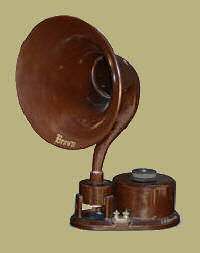 |
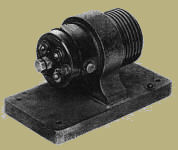 |
This type of amplifier was invented in 1904 by Bell
engineer Herbert E. Shreeve. Shreeve used the device (left) to
amplify telephone signals between New York and Chicago. In 1923 Brown introduced a
loudspeaker with an integrated carbon amplifier, the
"Crystavox" (right). Type "V" indicates
that the Brown amplifier can be used for operating a
loudspeaker or headphones from a 1-valve receiver. Type
"C" was used for a crystal set. |
|
Compared to a 2
valve amplifier, that would cost about 10 pounds,
this amplifier was cheap: about 5 pounds. |
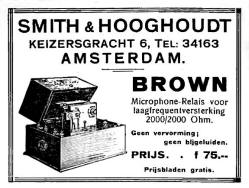 |
|
Four models were available with different input and
output impedances. This model has an input and output
impedance of 120 ohms, the type number is RR53/1. The
original price was £ 5-5-0. |
| The
amplifier, called ("Microphone-Relais") was also sold in The Netherlands. The price
was f 75,- |
| On the right
an advertisement in magazine Radio Expres, August 7,
1924. |
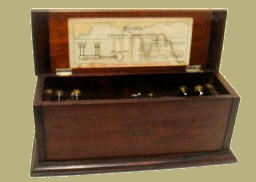 |
Sidney George Brown
(1873-1948), the company founder,
was a prolific inventor of electromechanical devices,
including the well known "A" headphones, the "Microphone Amplifier" and a gyro compass.
The company also made loudspeakers and radios. In 1906
he founded Telegraph Condenser Co and in 1910 he set up
a business under his own name: S.G. Brown Ltd., in Watford (North of London) and later had a works in North Acton, London W3. The
company eventually became part of the Racal organisation
which in turn became part of Thales-Racal Acoustics. |
| On the left:
the
Brown 2-Stage Crystal Amplifier made in
1926. |
| Serial number: |
7112 |
| Dimensions: |
16,5 x 12 x 9,5 cm |
| Made in: |
1923 |
| Purchased in: |
2011 |
| Sold in: |
2024 |
| Impedance: |
120 ohms |
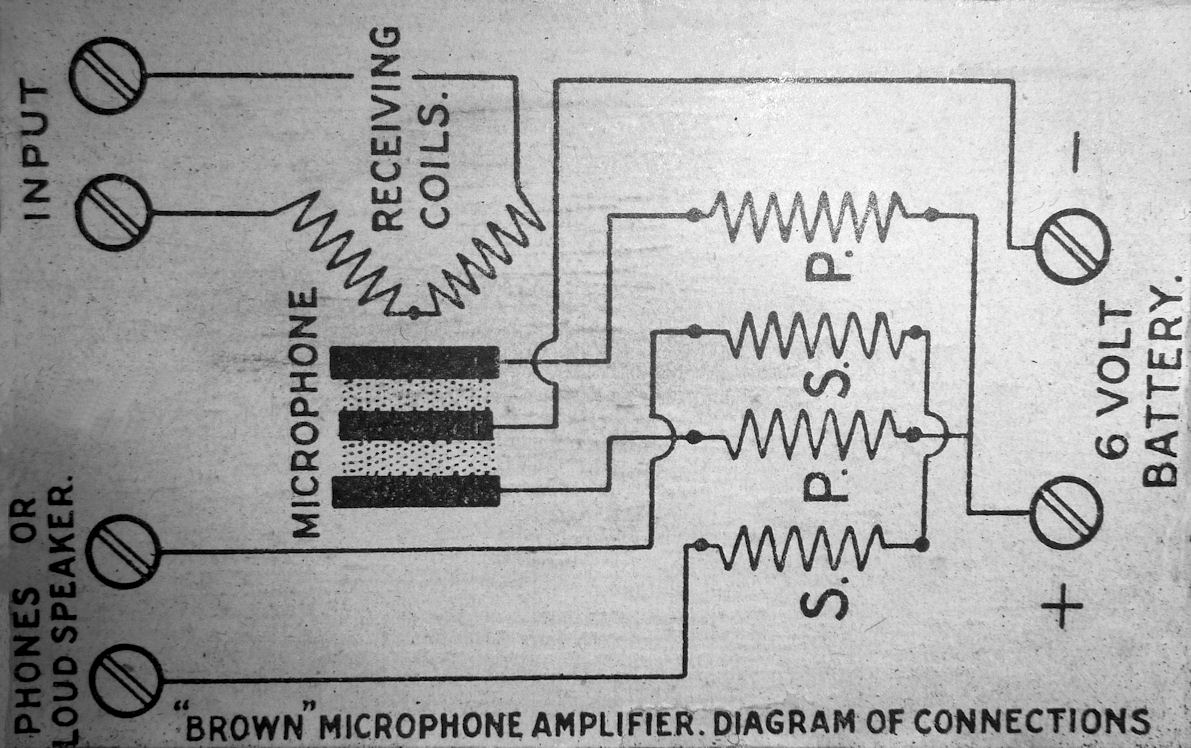 |
Click on the circuit to enlarge |
| |
|
The sound was described as
"pure and undistorted" in the advertisements. But in fact there was quite a lot of
distortion.
By 1926, Brown
appears to have lost interest in this technology
and passed the rights over to the New Wilson
Company in London. In that year New Wilson
introduced the Microphone Bar Amplifier. |
| |
|
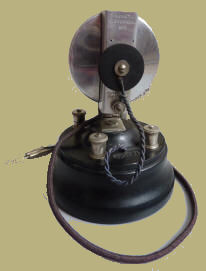 |
|
The New Wilson Microphone
Bar Amplifier |
|
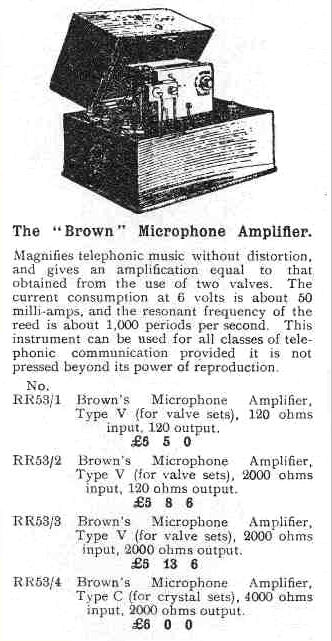 |
|
Advertisement,
showing the various models of the Microphone Amplifier |
|
|
.jpg) |
|
Top view |
.jpg) |
.jpg) |
|
Side view and detail of the mechanism |
|
|